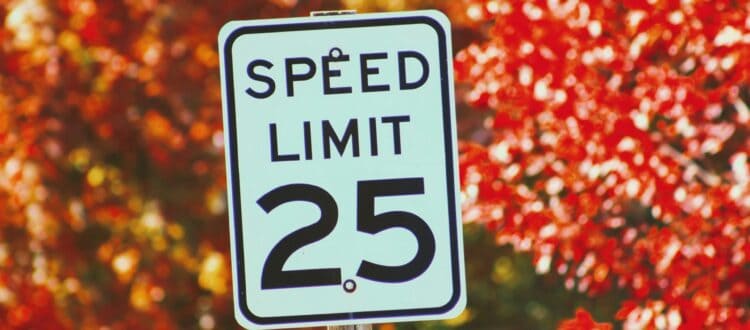Standard traffic signs play a crucial role in regulating and organizing the flow of traffic on roadways, ensuring the safety of drivers, pedestrians, and cyclists. These signs convey essential information such as speed limits, right of way, road conditions, and potential hazards, allowing road users to make informed decisions while navigating through various environments.
With standardized designs and universally recognized symbols, traffic signs provide consistency and clarity, contributing to the overall efficiency and safety of transportation systems. Understanding the significance of these signs is fundamental for promoting responsible and secure road behavior, making them an indispensable aspect of modern road infrastructure.
How are Standard Traffic Signs Regulated?
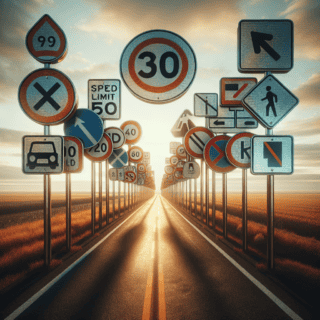 Standard traffic signs are regulated through a combination of federal, state, and local authorities to ensure uniformity and consistency across roadways. At the federal level, the FHWA (Federal Highway Administration) Manual on Uniform Traffic Control Devices (MUTCD) provides guidelines and standards for the design, placement, and usage of traffic control devices, including signs, signals, and pavement markings. This comprehensive document serves as a national standard, offering guidance to state and local transportation agencies.
Standard traffic signs are regulated through a combination of federal, state, and local authorities to ensure uniformity and consistency across roadways. At the federal level, the FHWA (Federal Highway Administration) Manual on Uniform Traffic Control Devices (MUTCD) provides guidelines and standards for the design, placement, and usage of traffic control devices, including signs, signals, and pavement markings. This comprehensive document serves as a national standard, offering guidance to state and local transportation agencies.
Also, states and local jurisdictions may have their own specific regulations and standards that align with the MUTCD while addressing unique regional considerations. By adhering to these regulatory frameworks, the development and implementation of standard traffic signs are harmonized, promoting the effective communication of vital information to road users while enhancing overall traffic safety.
Should Standard Traffic Signs Comply with the MUTCD?
They should unquestionably comply with the guidelines outlined in the Manual on Uniform Traffic Control Devices (MUTCD) to ensure consistency, clarity, and effectiveness. Adhering to the MUTCD’s standards guarantees that traffic signs are designed, installed, and maintained in a uniform manner, enhancing their visibility, comprehension, and overall impact on road users. By following the MUTCD, traffic engineers and authorities can promote a cohesive and predictable environment for drivers, pedestrians, and cyclists, ultimately contributing to improved safety and reduced confusion on the roadways.
Furthermore, consistent compliance with the MUTCD ensures that traffic signs meet recognized standards, facilitating efficient communication and reinforcing a universal understanding of traffic regulations and guidance. Therefore, adherence to the MUTCD is paramount in maintaining the integrity and effectiveness of standard traffic signs across diverse transportation networks.
Key Requirements to be DOT and MUTCD-Compliant
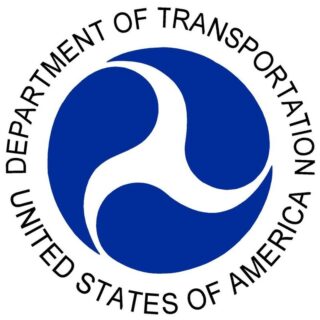 Key requirements for standard traffic signs to be Department of Transportation (DOT) and Manual on Uniform Traffic Control Devices (MUTCD)-compliant include adherence to the national standards outlined in the MUTCD. The MUTCD, administered by the Federal Highway Administration (FHWA), provides guidelines for all traffic control devices, including road markings, highway signs, and traffic signals.
Key requirements for standard traffic signs to be Department of Transportation (DOT) and Manual on Uniform Traffic Control Devices (MUTCD)-compliant include adherence to the national standards outlined in the MUTCD. The MUTCD, administered by the Federal Highway Administration (FHWA), provides guidelines for all traffic control devices, including road markings, highway signs, and traffic signals.
It is periodically updated to accommodate changing transportation needs and new safety technologies. States are required to adopt the latest edition of the MUTCD (currently the 2023 revision) as their legal standard for traffic control devices within a specified timeframe.
The functions of signs, as outlined in the MUTCD, include providing regulations, warnings, and guidance information for road users. Compliance with the MUTCD ensures that traffic signs are designed, installed, and maintained in a uniform manner, enhancing their visibility, comprehension, and overall impact on road users. Additionally, the design and application of traffic control devices used in work zones should consider the needs of all road users, including those with disabilities, in accordance with FHWA policy.
What are the 3 Types of Standard Traffic Signs?
1. Regulatory Signs
 Regulatory signs are designed to convey traffic laws and regulations to road users. These signs are crucial for directing and managing the flow of traffic, as well as informing motorists and pedestrians about specific rules and requirements.
Regulatory signs are designed to convey traffic laws and regulations to road users. These signs are crucial for directing and managing the flow of traffic, as well as informing motorists and pedestrians about specific rules and requirements.
Examples of regulatory signs include speed limit signs, stop signs, yield signs, and signs indicating parking restrictions. These signs typically feature a white or red background and are essential for maintaining order and safety on the road.
2. Warning Signs
 Warning signs are intended to alert road users to potential hazards, changes in road conditions, or other situations that require caution. These signs are crucial for promoting awareness and preparedness among drivers, helping them anticipate and respond to specific challenges on the road.
Warning signs are intended to alert road users to potential hazards, changes in road conditions, or other situations that require caution. These signs are crucial for promoting awareness and preparedness among drivers, helping them anticipate and respond to specific challenges on the road.
Examples of warning signs include those indicating sharp curves, pedestrian crossings, slippery roads, and animal crossings. They typically have a yellow background with black copy and/or pictogram. By providing advance notice of potential dangers, warning signs contribute to overall road safety.
3. Guide Signs
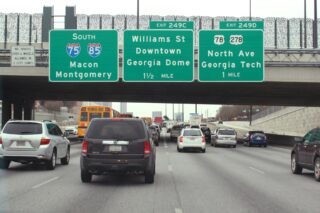 Guide signs offer information and guidance to road users, assisting them in navigating to their destinations and making informed decisions while traveling. These signs provide directions to specific locations, such as hospitals, rest areas, gas stations, and tourist attractions.
Guide signs offer information and guidance to road users, assisting them in navigating to their destinations and making informed decisions while traveling. These signs provide directions to specific locations, such as hospitals, rest areas, gas stations, and tourist attractions.
Also, guide signs may include route markers, exit signs, and distance signs, aiding drivers in planning their routes and reaching their intended destinations efficiently. Background colors include green, brown, and blue. Guide signs play a vital role in facilitating smooth and organized travel for motorists.
What are the Standard Shapes of Traffic Signs?
1. Octagon (Stop Sign): The octagonal shape is exclusively used for stop signs. Its distinct shape and red color with white lettering make it instantly recognizable to drivers, signaling the requirement to come to a complete stop at the designated intersection or junction.
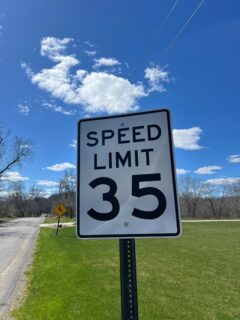 2. Triangle (Yield Sign): Yield signs feature a distinctive triangular shape with a white background and red border. The triangular shape, combined with the color scheme, serves as a universal indication for drivers to yield the right of way to oncoming traffic.
2. Triangle (Yield Sign): Yield signs feature a distinctive triangular shape with a white background and red border. The triangular shape, combined with the color scheme, serves as a universal indication for drivers to yield the right of way to oncoming traffic.
3. Circle (Railroad Crossing): Circular traffic signs are commonly used to convey warnings. For example, the circle shape is utilized for railroad crossing signs, which alert drivers to the presence of a railway crossing ahead. The circular shape/white background is associated with railway caution and is easily identifiable on the road.
4. Rectangle (Regulatory and Guide Signs): Rectangular signs are versatile and are used for a variety of purposes, including regulatory signs that indicate speed limits, no parking zones, and one-way streets. Additionally, rectangular signs are used for guide signs, providing information about services, directions, and distances.
5. Pentagon (School Zone and School Crossing): Traffic signs in the shape of a pentagon are typically associated with school zones and school crossings. The distinctive pentagonal shape, combined with the fluorescent yellow-green color, serves as a visual cue for drivers to be alert and cautious in areas where children may be present.
What are the Standard Colors of Traffic Signs?
1. Red: Red is used on traffic signs to indicate prohibitive or regulatory information. For example, stop signs, yield signs, do not enter signs, and wrong way signs all utilize the color red to convey critical instructions to drivers. Red is associated with commands and prohibitions, signaling the need for immediate attention and compliance.
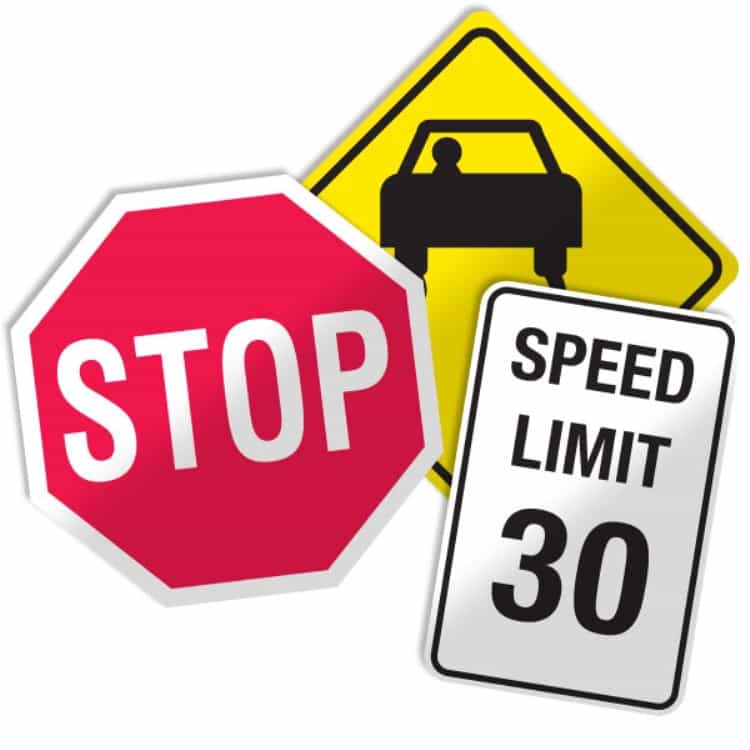 2. Yellow: Yellow is primarily used on traffic signs to communicate general warnings and cautions. Signs indicating a change in road conditions, such as curves, intersections, and slippery conditions, often feature a yellow background. Additionally, yellow is used for warning signs related to pedestrian crossings, schools, and bicycle crossings, alerting drivers to potential hazards and the need for increased awareness.
2. Yellow: Yellow is primarily used on traffic signs to communicate general warnings and cautions. Signs indicating a change in road conditions, such as curves, intersections, and slippery conditions, often feature a yellow background. Additionally, yellow is used for warning signs related to pedestrian crossings, schools, and bicycle crossings, alerting drivers to potential hazards and the need for increased awareness.
3. White: White is commonly used for regulatory signs, such as speed limit signs, lane use control signs, and parking restrictions. It is also utilized for guide signs, providing information about specific destinations, services, and facilities. White is associated with regulations, instructions, and information, guiding drivers and pedestrians in their interactions with the road environment.
4. Green: Green traffic signs typically convey guidance and directional information. They are used for highway exit signs, street name signs, and distance signs, as well as for guide signs indicating destinations, parks, and other points of interest. Green signifies movement and direction, helping road users navigate and plan their routes effectively.
5. Blue: Blue traffic signs are employed to communicate traveler services and information, such as rest area signs, food and lodging signs, and hospital signs. Additionally, blue is used for accessibility signs, including parking signs for individuals with disabilities. Blue/brown signify traveler services and facilities, as well as tourism points of interest, providing valuable information to road users on their journeys.
Are Traffic Signs Universal Throughout the US?
Traffic signs are largely universal throughout the US in terms of their design and purpose. The Manual on Uniform Traffic Control Devices (MUTCD) provides national standards for traffic control devices, ensuring consistency and uniformity in the design, application, and placement of signs across the country. While there may be variations in local regulations and specific sign placement based on unique traffic conditions or regional requirements, the fundamental principles and meanings of traffic signs remain consistent. This uniformity allows road users to rely on familiar sign designs and interpretations regardless of their location within the United States, promoting safety, predictability, and effective communication on the roadways.
Conclusion
Standard traffic signs play a crucial role in ensuring the safety, efficiency, and organization of road networks across the United States. The consistent design, colors, and shapes of traffic signs, as outlined in the Manual on Uniform Traffic Control Devices (MUTCD), provide road users with a universally recognizable system of communication. From regulatory signs conveying essential traffic laws to warning signs alerting drivers to potential hazards, and guide signs offering navigation assistance, these standard traffic signs contribute to the overall predictability and orderliness of the transportation system. CHECK HERE for MUTCD-compliant traffic signs.
Popular Posts:

